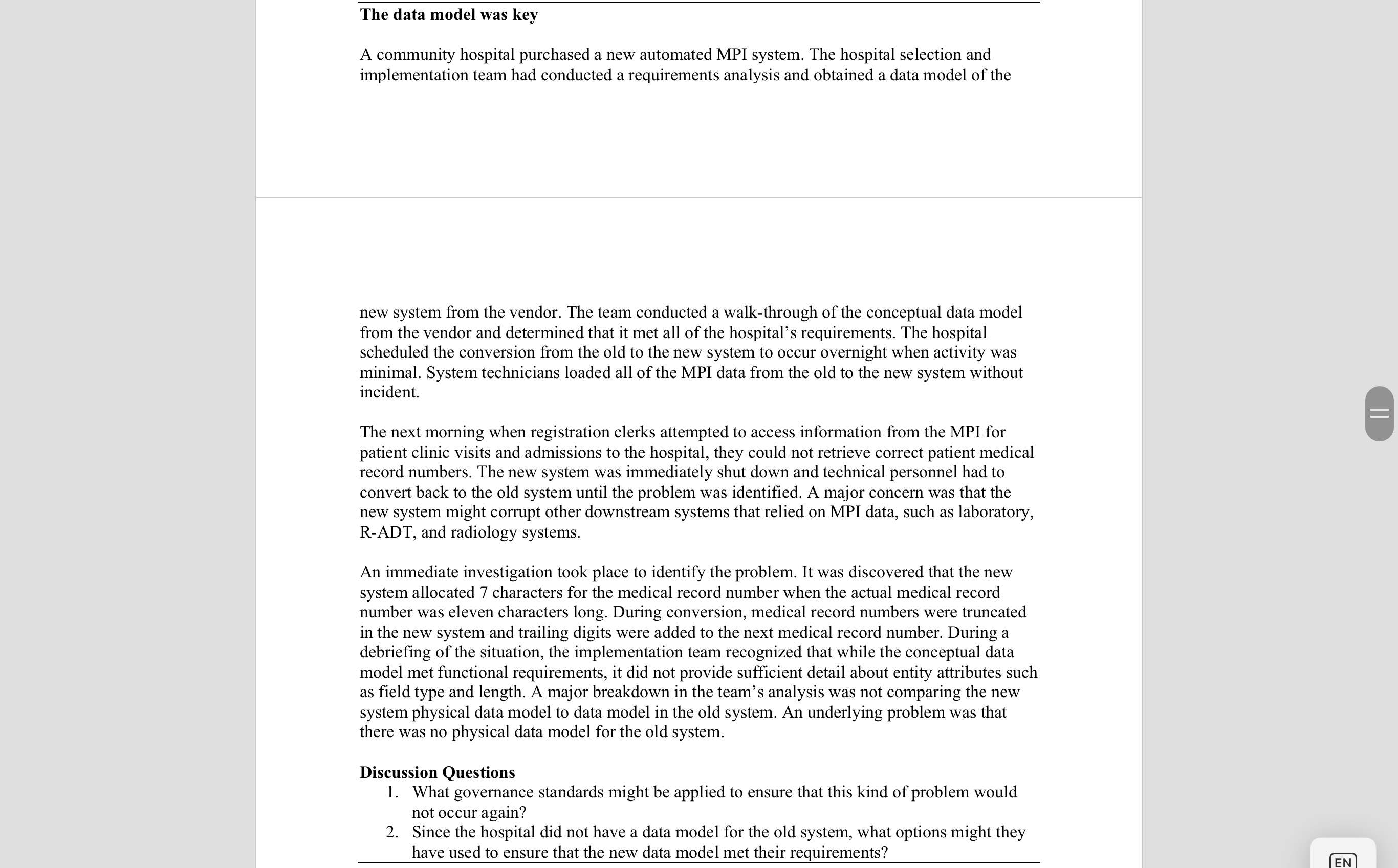(Solved): The data model was key A community hospital purchased a new automated MPI system. The hospital selec ...
The data model was key A community hospital purchased a new automated MPI system. The hospital selection and implementation team had conducted a requirements analysis and obtained a data model of the new system from the vendor. The team conducted a walk-through of the conceptual data model from the vendor and determined that it met all of the hospital's requirements. The hospital scheduled the conversion from the old to the new system to occur overnight when activity was minimal. System technicians loaded all of the MPI data from the old to the new system without incident. The next morning when registration clerks attempted to access information from the MPI for patient clinic visits and admissions to the hospital, they could not retrieve correct patient medical record numbers. The new system was immediately shut down and technical personnel had to convert back to the old system until the problem was identified. A major concern was that the new system might corrupt other downstream systems that relied on MPI data, such as laboratory, R-ADT, and radiology systems. An immediate investigation took place to identify the problem. It was discovered that the new system allocated 7 characters for the medical record number when the actual medical record number was eleven characters long. During conversion, medical record numbers were truncated in the new system and trailing digits were added to the next medical record number. During a debriefing of the situation, the implementation team recognized that while the conceptual data model met functional requirements, it did not provide sufficient detail about entity attributes such as field type and length. A major breakdown in the team's analysis was not comparing the new system physical data model to data model in the old system. An underlying problem was that there was no physical data model for the old system. Discussion Questions 1. What governance standards might be applied to ensure that this kind of problem would not occur again? 2. Since the hospital did not have a data model for the old system, what options might they have used to ensure that the new data model met their requirements?
